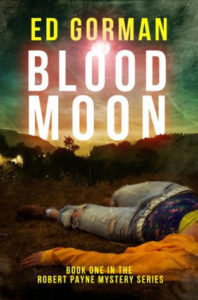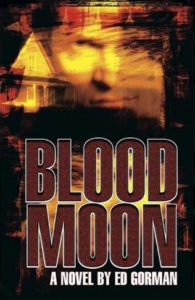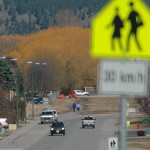Home »

A myriad of small surprises in this story
By Derryll White
Gorman, Ed (1994). Blood Moon.
“Time is the fire in which we burn.” – Delmore Schwartz.
Ed Gorman (1941-2016) published his first novel ‘Rough Cut’ in 1984 and soon quit his day job and became known as a genre writer and editor of anthologies. ‘Kirkus Review’ has called him “one of the most original crime writers around.”
Never having read Gorman before except in short story form, he surprises with his long. elegiac passages of description – of both place and person. He is a very accomplished writer, expert in the way he builds the plot. He lures the reader along, sharing well-developed snippets of local history, personal biases, looks at the federal penal system and the exploitive nature of down-home religion. There are a myriad of small surprises in this story.
Gorman uses sex, local colour, even the weather to set changing moods within the larger story of ‘Blood Moon.’ Yes, there are many smaller stories, side riffs in a large blues guitar run, but they all feed the core music.
********
Excerpts from the novel:
 IDYLLIC AMERICA – This was the bucolic New Hope, the New Hope that existed in the secret heart of everybody who had ever grown up, like me, in the small-town Midwest, all long, lazy sunny afternoons fishing, and chilly football Friday nights out at the ramshackle old stadium, and Christmas carols on the loud-speaker as you jostled for gifts at the town’s one-and-only department store, which was basically four big rooms with a lot of different stuff piled into it. And the Amish, of course, their horses clopping hollowly down the asphalt roads, the pretty women peering out from beneath their dark Bonnets, the men in coarse gray beards and inscrutable eyes.
IDYLLIC AMERICA – This was the bucolic New Hope, the New Hope that existed in the secret heart of everybody who had ever grown up, like me, in the small-town Midwest, all long, lazy sunny afternoons fishing, and chilly football Friday nights out at the ramshackle old stadium, and Christmas carols on the loud-speaker as you jostled for gifts at the town’s one-and-only department store, which was basically four big rooms with a lot of different stuff piled into it. And the Amish, of course, their horses clopping hollowly down the asphalt roads, the pretty women peering out from beneath their dark Bonnets, the men in coarse gray beards and inscrutable eyes.
DOWNTOWN – The drive had been four hours, so I needed food and coffee. I decided to try the downtown to get a human sense of the place. The downtown of any place, no matter its size, is where you can get your quickest sketch of a town’s sociology.
PIONEER WOMEN – Of course, unhappiness was a tradition among pioneer women out here. Despite all the macho cowboy movies, women pretty much kept things running on the frontier. Sure the men had to plow and till the fields and hunt the meat, but study up on pioneer women, and you’ll see why the suicide rate was so high among them – eighteen, twenty-hour days seven days a week during which they did everything from making dyes for coloring cloth from bark and berries and roots; making clothing on a loom; making all meds; tanning hides and cutting patterns out for shoes; washing, ironing, mending; taking total responsibility for a brood of kids that probably ran to seven or eight; giving her man sex on demand; being priest, doctor, teacher, and in her “spare” time pitching in and helping with the planting and, later on, the harvest.
RELIGION – The church was small and modern in a repellant sense, all sharp angles and juts, like a piece of glass sculpture that had been dropped and smashed and then glued back together ineptly. This message seemed to be that God was a schizophrenic, and a clumsy one at that.
 – Derryll White once wrote books but now chooses to read and write about them. When not reading he writes history for the web at www.basininstitute.org.
– Derryll White once wrote books but now chooses to read and write about them. When not reading he writes history for the web at www.basininstitute.org.








